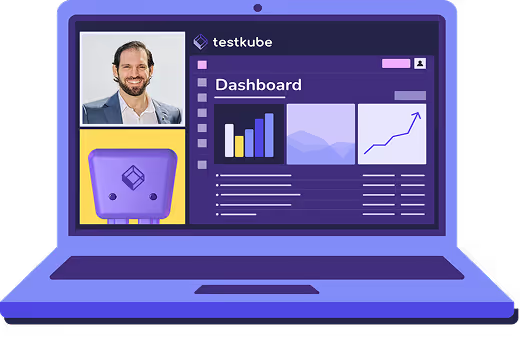Table of Contents
Definition
TestOps is the discipline of managing and orchestrating all testing activities within a DevOps pipeline to improve efficiency, scalability, and software quality. It unifies automated and manual testing, environment management, and data-driven analytics to provide continuous feedback throughout the software development lifecycle (SDLC).
Why It Matters
In modern DevOps environments, testing must move as fast as development. TestOps ensures that testing is no longer a bottleneck by embedding it directly into continuous integration and delivery (CI/CD) workflows. It allows teams to maintain quality at scale, minimize feedback delays, and make data-driven release decisions. Effective TestOps practices reduce flaky tests, optimize infrastructure usage, and improve collaboration between QA, DevOps, and engineering teams.
How It Works
TestOps combines automation, orchestration, and monitoring to streamline the testing lifecycle:
- Continuous Integration (CI/CD) Integration: Automated tests run with every code commit or build to ensure continuous quality validation.
- Centralized Management and Analytics: A unified dashboard provides real-time visibility into manual and automated test results.
- Scalable Execution: Containerization and cloud infrastructure allow tests to run in parallel across multiple environments, accelerating feedback loops.
- Data-Driven Insights: TestOps tools collect and analyze performance, coverage, and reliability data to improve testing strategy and resource allocation.
How TestOps and Test Automation Work Together
Test automation provides the repeatable, scriptable foundation for executing tests, while TestOps provides the operational layer that manages, monitors, and scales those tests. Automation is the “what” and “how,” while TestOps governs the “when,” “where,” and “why.” Together they deliver fast, reliable, and continuous validation throughout the SDLC.
Leading TestOps Tools
How It Relates to Testkube
Testkube embodies the principles of TestOps for cloud-native applications. It provides the orchestration layer that connects test automation with DevOps infrastructure, enabling continuous testing at scale.
- Kubernetes-Native Execution: Testkube runs any testing framework, including Postman, Cypress, JMeter, and Playwright, directly within Kubernetes clusters.
- Workflow Orchestration: Teams define automated test workflows as code, version them in Git, and trigger them through CI/CD events or API calls.
- Centralized Observability: Logs, metrics, and test results are aggregated in one control plane for full visibility across environments.
- Scalable Infrastructure: Tests can be executed across clusters, namespaces, or regions to meet enterprise-level testing demands.
- Cross-Team Collaboration: Testkube enables DevOps, QA, and developers to share insights from a single source of truth, supporting the TestOps goal of unified quality ownership.
By embedding testing directly within the infrastructure layer, Testkube eliminates the need for separate test environments and provides the scalability and automation TestOps requires in modern engineering organizations.
Common Pitfalls
- Treating TestOps as only test automation instead of an operational discipline.
- Running tests without centralized observability or data tracking.
- Failing to align test execution with CI/CD triggers or deployment events.
- Ignoring infrastructure scalability and parallelization in large pipelines.
FAQs
1. How is TestOps different from DevOps?
DevOps focuses on automating software delivery, while TestOps focuses on automating and managing testing within that delivery pipeline.
2. Do you need automation to implement TestOps?
Yes. Test automation is foundational to TestOps because it enables continuous testing, faster feedback, and repeatability.
3. Can TestOps include manual testing?
Yes. TestOps integrates manual testing where needed but manages it alongside automated efforts for unified reporting and coverage tracking.
4. What infrastructure supports TestOps at scale?
Cloud-based and containerized environments, such as Docker and Kubernetes, are commonly used for parallel test execution and environment isolation.
5. How does TestOps improve release quality?
By providing real-time insights into test coverage, reliability, and performance, TestOps enables faster and safer release decisions.


